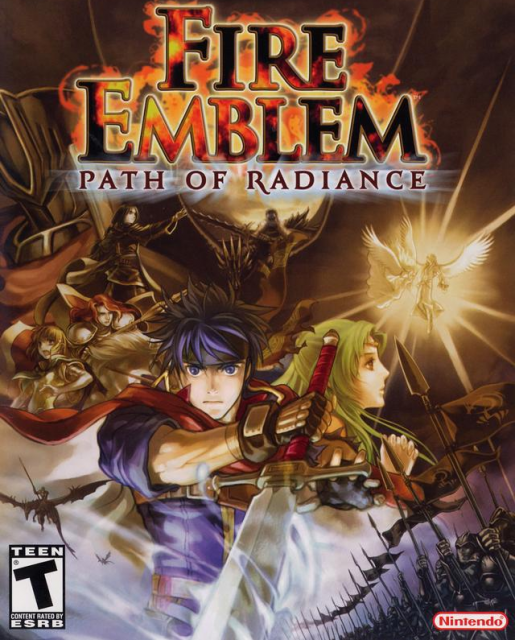A highly deep and thoughtful medieval war game.
To fans of the series, Fire Emblem is primarily known for a handful of strengths, such as its complex political narratives, the depth of its strategic gameplay, the well written characters, etc. Path of Radiance, the first 3D entry in the series, changes absolutely none of this. In fact, it refines these traits quite noticeably. Although Path of Radiance asks for a high investment, especially at the outset, the payoff is indeed worth it, offering one of the most thought out and tactical experiences in the world of video games.
But the game is not without its limitations. This much is evident simply from looking at the game; it seems to employ at least two art styles simultaneously, but executes neither one very competently. Much of the game resembles a mid-life PlayStation game, though more from a stylistic standpoint than a technical one. Story scenes are not afraid to use gameplay mechanics as tools for advancing the narrative, characters limiting themselves to individual squares and stock animations much as they would during actual gameplay moments. Unfortunately, rather than creating a seamless world, this style is needlessly limiting and only serves to remind you that you are playing a game rather than exploring a well crafted world. Technical limitations only worsen this problem. Map units sport low polygon counts and low resolution textures that simply do not look good up close. (The game proper pulls far enough away that this is not a problem when playing through the various chapters) Fog effects in some parts of the game more resemble a decreased draw distance than they do actual fog. Path of Radiance looks exactly like a PlayStation game, for better or worse.
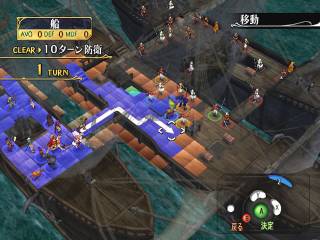
Many of the story scenes, however, resemble a visual novel more than they do a PlayStation game. Characters will stand around in a stock setting (on a ship or war field), discussing whatever events previously transpired. While the lack of moving portraits can initially be off-putting, this is inconsequential, as it is a limitation of the medium and does not highly impact the game’s ability to communicate emotion. What actually impacts this ability is the lack of facial variety on the portraits. After all, visual novels often live or die by how well their characters can display various emotions and feelings. The portraits certainly have some expressions (especially major characters like Elincia and Mist), but they certainly do not have enough. This can lead to strange situations where a character can look the same slightly groggy as they do when relating painful stories about their lives, robbing the scenes of at least some of the intended emotional impact.
Yet visual novels also live by the quality of their stories, and in these terms, Path of Radiance is a resounding success. The first reason for this lies in one of the best translations to grace a video game. The meaning behind every line is crystal clear, partially because of the wide vocabulary employed. This leads not only to highly expressive characters, but also allows the script the degree of complexity it achieves. This is very clearly a game about complex moral and political situations that are never truly black and white. One late game discussion adopts social contract theory as a topic, and while said discussion is not complete, the very idea of including this in the dialogue reflects the level of thought given to telling the story.
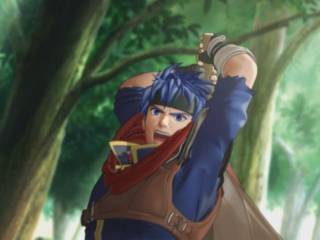
This is especially true of its themes, on which the game is (justifiably) insistent about. Do not let either the idyllic setup about a father teaching his son the various ins-and-outs about his career, or the over-arching plot about restoring a princess to her throne during a continent-wide war, lead you astray. The story’s main focus is on racial attitudes, explored through the human-in-all-but-name beorc and the laguz, who can change into animals at will. Such differences have led to many years of prejudice, slavery, and even genocide, eventually setting the stage for the game proper. It is breathtaking how much care has been given to the subject matter. Path of Radiance thoroughly explores the reasons for this state of affairs to the consequences of it and potential solutions, demonstrating how seriously the developers took the writing in making sure that this could apply outside its own example. This even applies to the depiction of the enemy side. Although the bellicose nature of Daein may initially seem like a way of avoiding serious characterization for the antagonists, this is far from the truth. Daein itself (or, to be specific, its newest king) is more the villain than any particular character in the story. The atmosphere is one of decline and poverty, thus building sympathy for those unfortunate characters affected by it.
Especially noteworthy is how well Ike, as the protagonist, ties all of the story’s disparate elements together. For instance, his novice nature not only provides a good explanation for the beginning tutorials, but also the difficulty, as he is learning the ropes alongside the player themselves. This truly shines, though, in narrative rather than gameplay terms. It is through Ike that the game argues that his attitudes are not natural, but contextual; as soon as he actually meets laguz, he abandons any racist beliefs and behaviors he may have been harboring until that point, meaning it is possible for others to do the same. This is especially true after a series of events places him as the leader of his mercenary group, allowing him the authority necessary to enact his beliefs with some degree of success. Thus, Ike, in a way, serves as an ideal solution for the racial problems that plague Tellius.
However, the story is not entirely without its faults, the most serious one being how it contradicts its own messages in several important ways. In fact, the very nature of the laguz goes against whatever the game wishes to communicate. Regarding the laguz, race is not a social definition dependent on society, but an objective measure. Cats are measurably different from birds, the same applying just as well to dragons. (This applies just as well to sub-groups of the laguz tribes.) This is one step away from justifying prejudice, since the problem is rooted in an immutable nature instead of mass opinions. The half-animal aspect of the laguz only makes this that much worse.
True, the story explicitly criticizes this line of thinking, demonstrating how the laguz are just as much people as the beorc, but it still focuses too much on their animal natures for this message to take hold entirely. Time and time again, laguz characters are shown to have greater physical endurance and ability than their beorc counterparts. Since the only difference between them is that one side can transform into animals, it is easy to assume that this is the reason for the physical prowess. One can quite easily derive from this the message that it is OK to treat people differently specifically because of their race. This is solidified when the player is first given command over laguz characters. Rather than treat them like regular characters at first, the mechanics dictate giving them orders that worrying sound like commands one would give to a pet dog, such as roam or halt. (There are a few other moments in Path of Radiance that go against the writer’s intentions, but not as strongly as the previous examples listed.)
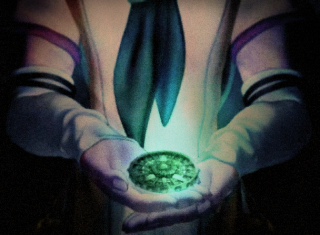
In spite of this, the mechanics are perhaps the strongest part of the game, due in no small part to the strategic depth they achieve. At first, this may not appear to be the case. In the early portions of the game, strategy only comes in short bouts, and is often quite simple: put Shinon front and center, let the enemy waste their time trying to hit him, and everybody else weaken the enemy so that Ike can gain experience from the victories. Sometimes, the focus feels more on leveling up Ike in the face of EXP drains than it does on completing chapters. The limitations placed on you only compound this. Physical units dominate the early game (thus making it harder to place magic units near the front of the action), and while the option to select units for battle is introduced early on, its true use does not come until later after said introduction. Lance knight Oscar and fighter Boyd are essentially boxed out of a few missions as soon as you are given the option to select specific units for upcoming fights, limiting your options and, thus, your potential stratagems.
But it is important to continue through this, as the game certainly delivers on its tactical promises. Although the game maintains a healthy variety in its goals (reach this spot, defend this spot for X turns, defeat all enemies/the boss, etc.), the means of achieving these goals remains consistent. The player moves various units about the map either to engage in combat directly or aid those units doing so. While this concept sounds approachable (and indeed,it is quite approachable), at any given time, there is a lot to manage. Victories, for instance, need to be balanced so that precious experience is not wasted on strong units with little room for improvement. This is in addition to weapon weaknesses, support bonuses, laguz transformations, equipped weapons, general unit vulnerability, and a litany of other features and quirks. Overlooking even the most benign thing can result in permanent death.
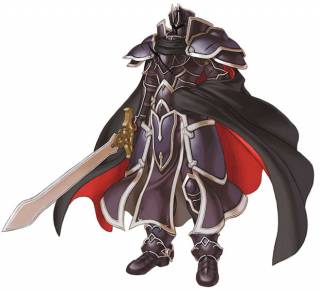
Yet very rarely is the game itself at fault. Most of the systems are too transparent for this to happen. The weapon triangle, central to combat, is introduced fairly early and reintroduced before each encounter. The environment provides you with important information on both terrain bonuses/penalties and how unit movement is affected (EG where to bottleneck enemies). Before each battle you engage in, you are presented with fairly accurate odds of what will happen, making sure you know full well any potential risks an action will carry. Any failure is on the hands of the player for not planning things out as thoroughly as they should, meaning it is possible to recover from any mistakes with enough careful thinking and observation. True, the rules behind some systems (such as when abilities activate, biorhythm, or weapon levelling) are forever kept in the dark from the player, and elements like the random number generation and recruiting new characters may feel like they add too much unpredictability to battles. But for the most part, these aspects are made minor enough that they do not intrude upon the predictable charm that makes Path of Radiance as enjoyable as it is.
This is in addition to the charm the colorful cast of characters contributes to the experience. Every character has a unique personality that sets them apart from the other characters, whether it’s the ever-hungry Ilyana or pragmatic Soren. This even applies to Anna, the girl giving you tutorial messages at periodic intervals throughout the game. Yet this aspect of the writing is not limited just to humor and likeability; it applies just as well to the meatier, more serious stuff. The various villains prove this quite well. Oliver, a corrupt Begnion senator, purchases another character as a slave, but treats him rather well, pampering said slave out of a sense of appreciation for his beauty. Thus, he offers at least a modicum of moral ambiguity that one may not grant him at first. The same applies to Naesala, the man who sells Oliver the slave in the first place. Although he engages in very reprehensible behavior throughout the narrative, he is not a soulless monster; he simply believes the ends justify the means, and in some instances, is capable of being convinced otherwise. There are many more characters in the game that invite discussion like this, even if the tone differs (some important cliffhangers are not addressed). But overall, the ensemble of characters adds a lot of life and personality to the story, a fact that cannot be understated.
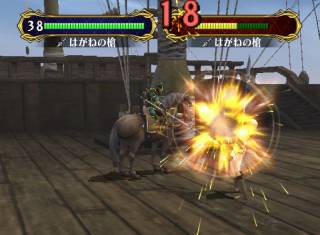
This is best felt through the support system. Although it gives adjacent characters minor combat bonuses, its true purpose is to flesh out characters that would otherwise remain largely unexamined, something Path of Radiance desperately needs. While several characters’ arcs have some noticeable affect on the story proper (Jill and Tormod serve as good examples), the main cast is limited to a handful of characters; everybody else is forgotten almost immediately after recruitment. The presence of the support system, however, allows greater exploration of character as long as you use them in battle. Because of how (relatively) easy it is to bring new units into an already well established party, this makes it possible to follow your favorite character arcs at almost any time. While the system isn’t perfect (none of the supports are timed to the narrative, leading to strange idiosyncrasies depending on when you activate a given support), it serves an important function and it does so very well.
As previously noted, such a level of quality is consistently maintained throughout the entire game. While not perfect, both the characters and the narrative perform terrifically, clearly doing what they set out to accomplish. The same applies just as well to the gameplay, which offers both great strategic depth and a fair challenge that result in a fun game. While the presentation is low-end, this does not seriously affect how the story is received. In fact, it is difficult to think of a single substantial flaw with Path of Radiance, making it an easy recommendation for any lover of tactical gameplay.
